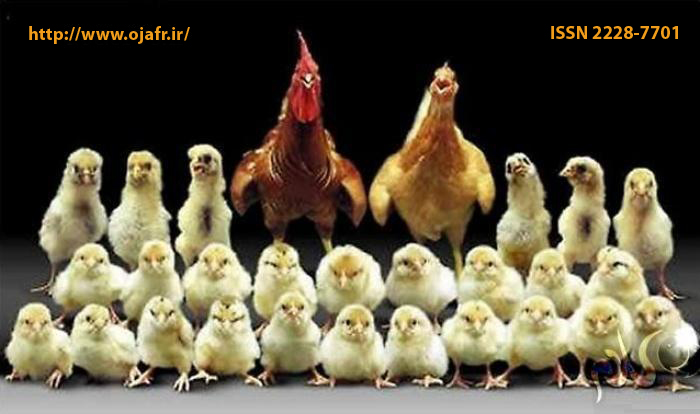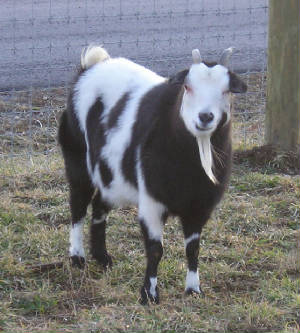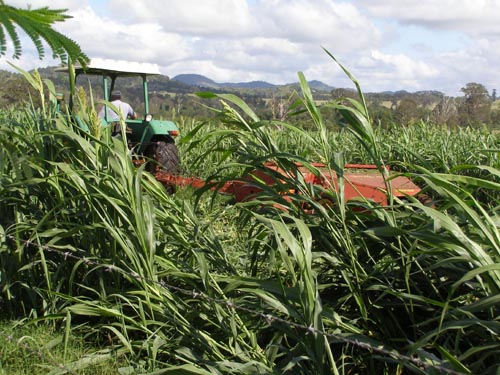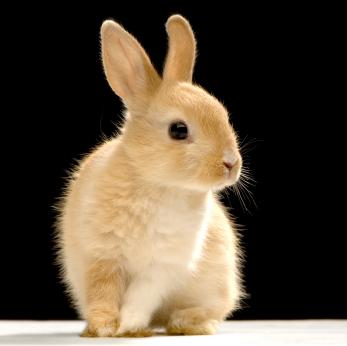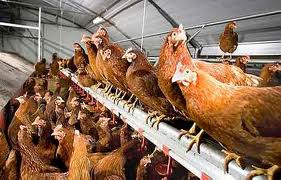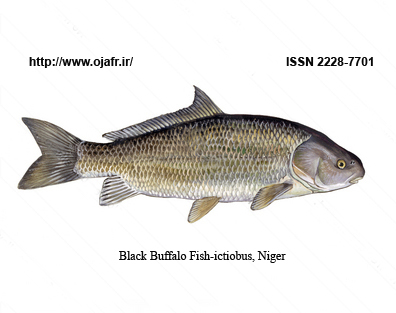Volume1 : Issue 1 - January 2011
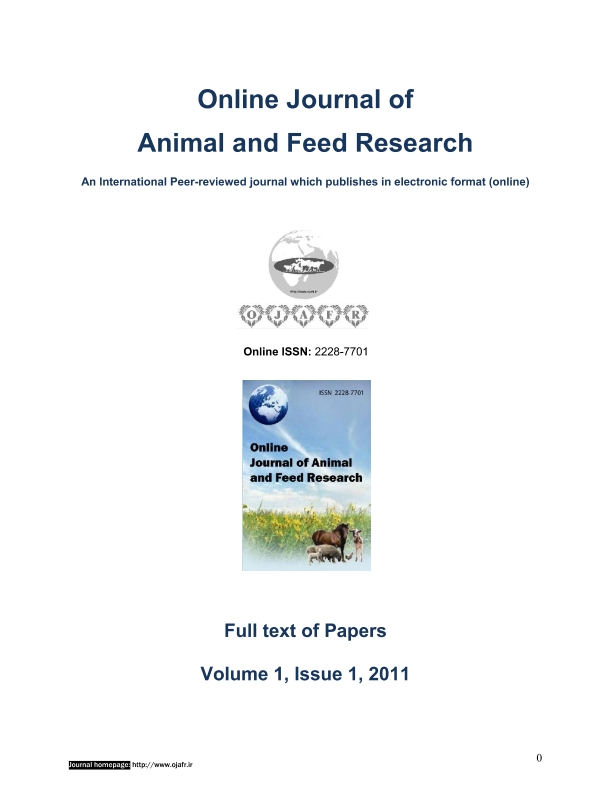
Table of Contents, 25 Jan 2011
| Research Title and Field Article (Abstract) |
|
Effect of dietary calcium level on egg production and eggshell quality in broiler breeder hens from 36 to 60 weeks of age |
Original Research, A01 Moreki, J.C., Van Der Merwe, H.J., and Hayes J.P., Online J. Anim. Feed Res., 1(1): 01–07. 2011. ABSTRACT: This study was conducted to evaluate the effects of different calcium (Ca) levels in diet on shell quality and egg production of Ross broiler breeder hens from 36 to 60 weeks of age. A total of 198 pullets were reared on restricted diets with 1.0, 1.5 and 2.0% Ca, up to 22 weeks. The pullets in each experimental diet were further randomly divided into three treatments with 1.5, 2.5 and 3.5% dietary Ca (66 birds per treatment) and fed from 23 to 60 weeks. The hens were caged individually. The cages were fitted with feed troughs and water nipples. Birds were fed breeder diet (23 to 34 weeks), breeder diet phase 2 (35 to 46 weeks) and breeder diet phase 3 (47 to 60 weeks) feed intake was administered according to Ross Breeders recommendations. The rations were isocaloric and isonitrogenous with different levels of Ca and P and were administered according to Ross Breeders Recommendations. Dietary treatment significantly (P<0.0001) affected Ca intake of broiler breeder hens. An average Ca intake (g/hen/day) of 2.14, 3.76 and 5.39 for the 1.5, 2.5 and 3.5% Ca levels, respectively occurred during the experimental period. Egg production, egg weight, egg mass, egg contents and shell weight/unit surface area (SWUSA), shell weight, shell percentage and shell thickness increased (P<0.0001) when dietary Ca was raised from 1.5% to 2.5%. However, no significant (P>0.05) differences were found in these variables between 2.5 and 3.5% Ca levels. All the eggshell quality variables increased over time while egg mass and egg production declined. From the results of the present study, it is concluded that increasing Ca level from 1.5 to 2.5% could improve eggshell quality. Present results suggest that the 2.5% Ca (3.8 g Ca/hen/day) seems to be adequate to support egg production and improving eggshell quality of broiler breeders. Keywords: Calcium, egg production, eggshell quality, egg weight, phosphorus. |
|
Effect of breed, sex and source within breed on the haematological parameters of the Nigerian goats |
Original Research, A02 Okonkwo, J.C., Okonkwo I.F. and Ebuh, G.U., Online J. Anim. Feed Res., 1(1): 08–13. 2011. ABSTRACT: Effect of breed, sex and source within breed, together with their interactions on the haematological parameters of Nigerian goats were studied using 81 goats (comprising 9 males and 18 females per breed), objective being to characterize and outline the differences and similarities between the breeds in blood parameters. The goats were derived from different geo-ecological zones in the country based on the areas of preponderance of each breed. The breeds studied were: the Sahel goat (SG), Red Sokoto goat (RSG), and West African Dwarf goat (WADG) and hematological values obtained per breed were: 22.52±1.48, 23.04±3.56, and 29.22±4.76 (%PCV); 7.52±0.50, 7.82±1.25 and 9.48±1.60 (g/dl Hb); 2.71±0.23, 3.09±0.64, and 4.10±0.42 (x1012/l RBC); 11.94±1.10, 11.32±2.03 and 9.23±0.63 (x109cells/l WBC), and 83.22±1.67, 76.72±2.30 and 73.34±3.40 (x106/mm3 MCV), respectively. Significant differences (P<0.05) were observed between the breeds, but the platelets, MCH and leucocytes differential counts were similar (P>0.05) for all the breeds. The WADGs were superior to the RSGs and SGs in PCV, Hb, and RBC counts, but lower in WBC counts and MCV. The SGs were similar in most of the haematological profiles examined, irrespective of geo-ecological distance, indicating homogeneity of the breed. The sahelian goat breed also outscored other breeds in MCV, showing that the breed has greater propensity to transport oxygen and in situation occasioning oxygen starvation, the breed survives better. This explains the reason for the survival of the breed in arid and semi-arid zone. Gender has no effect on the MCV and the values of 83.22±1.67x106/mm3, 76.72±2.30x106/mm3 and 73.34±3.40x106/mm3 were observed for the SG, RSG, and WADG, respectively. Keywords: Indices, red Sokoto goat, Sahel goat, West African Dwarf goat, haematology. |
|
Effect of dietary corn silage replacement with sorghum silage on performance and feed cost of growing steers
|
Original Research, A03 Jabbari, H., Tabatabaei, S.N., Kordnejad, E., Modarresi, M. and Tabeidian, S.A. Online J. Anim. Feed Res., 1(1): 14–21. 2011. ABSTRACT: This experiment conducted to assess effects of dietary corn silage (CS) replacement with sorghum silage (SS) on performance of growing Steers. 32 steers (182.3 ± 5 kg BW) randomly, in a CRD, allocated to 4 treatments of eight replicates. A diet of 60% hay (experimental part) plus 40% concentrate including barley, wheat bran, and soybean meal were fed for a period of 120 day. Hay included 40% of the same grass silage + 60% of different levels of SS and or CS, alone or in combination. SS was replaced with CS in steer rations with ratios of 0% (T1), 33% (T2), 66% (T3) and 100% (T4). Animals were weighed every week and information such as food intake (FI), daily weight gain (DWG) and food conversion ratio (FCR) were recorded in each replicate group and the body weight (BW) presented as a average of growth performance at the end of trial. Dietary CS replacement with SS significantly improved performance traits (P > 0.05), when SS was solely replaced in hay part of diet. The higher FI and lower FCR were observed in fattening bulls fed dietary group 4 (100% SS replaced in diet). Groups fed 33% SS (T2) did showed the higher DWG in compared to other groups. It is concluded that, the diet supplemented with 66 and or 100 % sorghum silage in 60% of hay portion, seem to be capable of improve performance accompanying with economic advantage in product prices. |
|
Effect of weaner body weight on growth traits of rabbits
|
Original Research, A04 Oke, Online J. Anim. Feed Res., 1(1): 22–27. 2011. ABSTRACT: Data from growth parameters and production traits of 108 ten-week old male rabbits comprising Newzealand white, Dutch and Chinchilla breeds collected over a period of 16 weeks were analysed in a 2- factor factorial in a randomised complete block (RCBD) to determine their interrelationships and response to age and weaner body weight groupings as a step towards employing them in selection and breeding programme and predicting live body weight. Individual breeds were grouped into three categories of body weights of low (LBW), medium (MBW), and high (HBW), depending on the body weight range of each breed. The linear body parameters were characterised using Body weight (BW), Heart girth (HG), Shoulder to tail drop, Head to shoulder, Ear length and Tail length, while the Production traits studied were average Daily feed intake, Feed conversion efficiency and mortality. Results of the analysis evinced significant (P<0.01) effect of breed-body weight interaction on the Production traits and linear body parameters studied. High weaner body weight Chinchilla consumed more feed; converted feed to meat more efficiently, gained weight more rapidly and recorded no mortality. Regression and correlation studies revealed that any one of the linear body traits could predict the rabbit body, weight at 20 weeks of age. Trait combination revealed that Ear length Vs Height at withers (R2-0.944), Ear length Vs Heart girth (R2-0.969) and Heart girth (R2= 0.935) best contributed to the total variability in body weight of Newzealand white Dutch and chinchilla respectively. Keywords: Weaner, body weight, growth traits and rabbits |
|
|
Influence of dietary calcium levels on bone development in broiler breeder pullets up to 18 weeks of age |
Original Research, A05 Moreki, J.C., Van Der Merwe, H.J., and Hayes J.P. Online J. Anim. Feed Res., ., 1(1): 28–39. 2011. ABSTRACT: The effects of three levels of dietary calcium on bone development in broiler breeder pullets up 18 weeks of age were investigated. A total of 640 one-day-old Ross broiler breeder pullets were used and were randomly assigned to four treatment groups, each having four replicates. The experimental design was split plot with four dietary treatments being the main plots and age as split plots. The four treatments were 1.0% Ca (0.45% Pi), 1.5% Ca (0.7% Pi), 2.0% Ca (0.9% Pi) and 1.0% Ca (0.45% Pi). The first 3 treatments were feed restricted according to Ross Breeders recommendations while the latter was ad libitum fed (served as control). Pullets were fed threeisocaloric and isonitrogenous diets: pre-starter (0 to 2 weeks); starter (2 to 4 weeks) and grower (4 to 18 weeks). At 6, 12 and 18 weeks of age, 5 pullets from each replicate were randomly selected and sacrificed by cervical dislocation and tibiae (left and right) and right humeri from each bird excised. Parameters studied were bone weight, bone length, bone width, bone ash, percent bone, true cortical area, bone strength and stress. These results showed that dietary Ca hadn’t statistical (P>.05) influence on bone formation of broiler breeder pullets on restricted feeding, except bone strength. Ad libitum feeding of broiler breeder pullets resulted in a significant (P<.05) increase in bone dimensions and bone breaking strength. However, ad libitum birds had significantly (P<0.0001) lower bone stress values than restricted groups, indicating less mineralization. However, stress required to break bones from ad libitum birds was significantly (P<0.0001) lower than that required to break bones from restricted group. These results showed that dietary Ca level had no significant effect on bone formation in broiler breeder pullets on restricted feeding up to 18 weeks of age, except bone breaking strength. Keywords: Bone dimensions, bone strength, bone stress, calcium |
|
Micronuclei profile: an index of chromosomal aberrations in freshwater fishes (synodontis clarias and tilapia nilotica) |
Original Research, A06 Okonkwo, J.C., Obiakor, M.O. and Nnabude, P.C. Online J. Anim. Feed Res., 1(1): 40-45: 2011. ABSTRACT: Incidence of chromosomal aberrations in Synodontis clarias and Tilapia nilotica (Linnaeus 1757) were measured using the conventional micronucleus assay in fish erythrocytes. The species showed varying degree of micronuclei frequencies in their respective genomes of sampled gill and kidney blood. Cytological examinations showed bi-nucleated cells, deformed nuclei including the main aberrations, micronucleus formations in various genomes of the fish from different locations considered in this study. Comparison of the micronucleus rates in peripheral and kidney blood of the two species revealed no statistical difference (P> 0.05). On species occurrence of the measured chromosomal aberrations, averages of micronucleus frequencies recorded in Synodontis clarias showed visible variation and to be 2.2 folds higher than the values obtained in the corresponding Tilapia sp. but there was no statistical difference (P>0.01) among the two breeds. The work recommends that micronuclei tests in fish erythrocytes be carried out at various times, thus making it possible to follow-up the changing micronuclei frequencies and concludes that gills and kidney erythrocytes can be used in studies concerning chromosomal aberrations since the sampling of the peripheral blood is appropriate as it allows collecting several samples from the same individuals, without having to sacrifice it. Keywords: Micronucleus assay, chromosomal aberrations, Synodontis clarias, Tilapia nilotica, Anambra River |
| < Prev | Next > |
|---|




